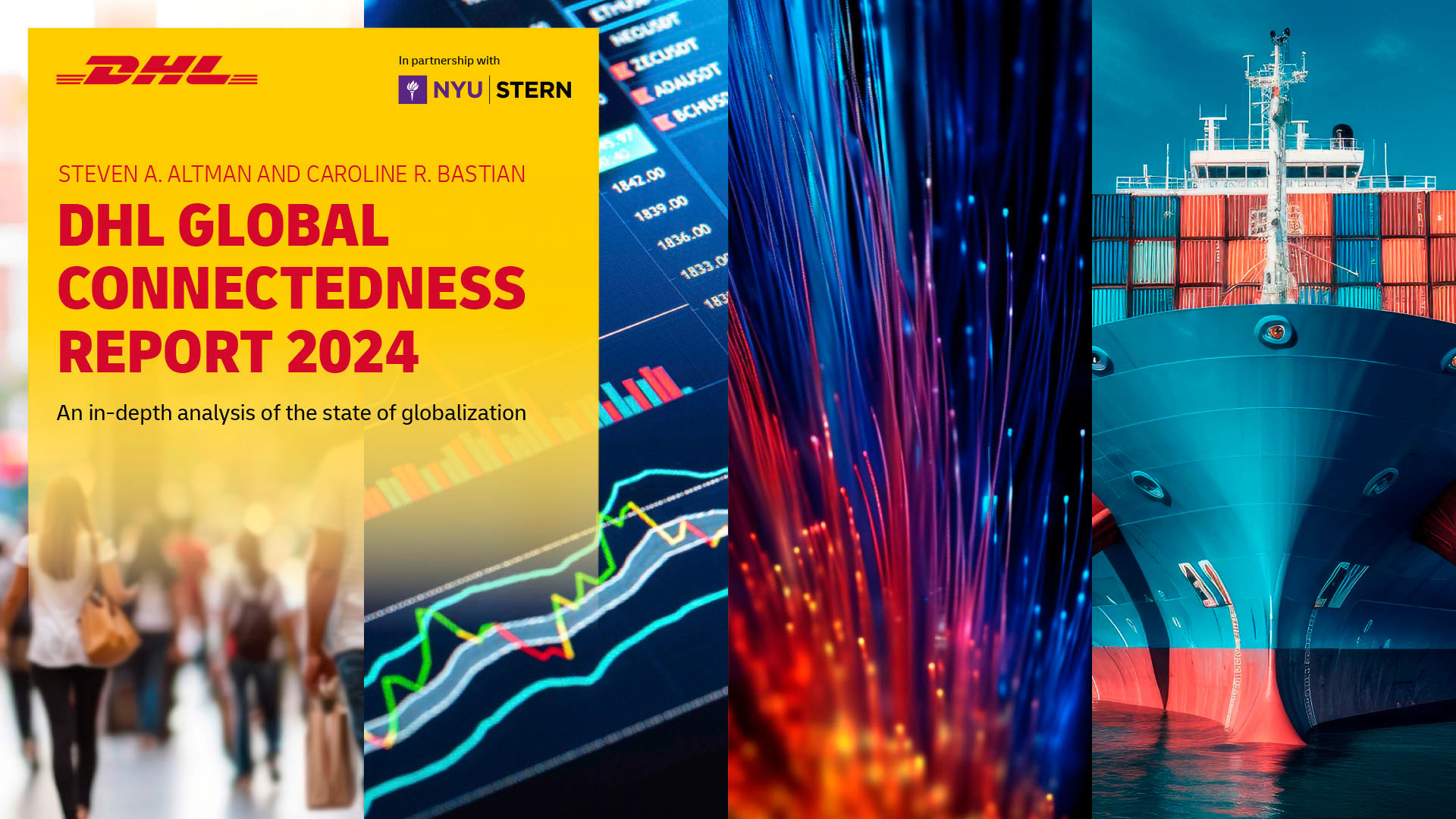Politics fails to deflect move to globalisation, says DHL report
13 / 03 / 2024

Source: DHL
There is no sign of geopolitics affecting the march of globalisation, says DHL in the latest edition of its Global Connectedness Report.
In a preview of the document, due to be published on Friday 15 March, the logistics company said that in 2023 globalisation remained at close to the record high reached in 2022, despite a series of wars, political crises and other shocks.
The report measures the globalization of more than 180 countries and territories, tracking how flows of trade, capital and people are impacted by global trends and events.
This year’s report named Singapore, the Netherlands and Ireland as the most globalized countries. Singapore has the largest international flows relative to its domestic activity, but the UK’s flows are the most broadly distributed around the world.
However, there were some regional variations. US-China ties continue to diminish, with the shares of both countries’ flows between each other falling by about a quarter since 2016 and a trend that accelerated in 2023. However, the two are still connected by larger flows than almost every other pair of countries, the report notes.
Russia and Europe have also decoupled, severing ties once deemed critical to both sides. Russia’s trade has shifted away from Western-aligned countries, and its foreign investment has collapsed. Russia suffered the largest single-year drop in global connectedness of the major G20 economies.
However, there is no general split between rival geopolitical blocs, it continues. The share of trade between US-aligned and China-aligned blocs actually increased during the Covid-19 pandemic, although it then fell after Russia’s full-scale invasion of Ukraine. Excluding Russia, it is now back roughly to its pre-pandemic level.
Nor is there any sign of globalization giving way to regionalization. Most international flows take place over the same or longer distances, and in fact the share of trade happening inside major geographic regions is declining. Only North America shows a clear near-shoring trend, and that only for trade in goods.
Companies are meanwhile earning more of their sales abroad and the value of their announced international expansion projects is at its highest relative to world GDP for more than a decade.
The cross-border share of mergers and acquisitions is holding steady, as is the share of output that companies produce outside their home countries.
Global trade’s share of world GDP was at a record high in 2022 and declined only modestly in 2023; the report says that trade normally slows more than GDP when global growth weakens and forecasts that it will accelerate substantially in 2024, at a slightly faster pace than GDP.
But the biggest globalization trend of all over the past 20 years is in information flows, DHL notes. However, the latest data shows that this is stalling as US-China tensions have weighed on international research collaboration, and many countries have imposed restrictions on international data flows.
The report also points out that while globalisation is moving at a fast pace, it is from a low absolute level; domestic flows still far exceed international ones. On a scale of 0-100, the world’s current global connectedness is only 25%.














